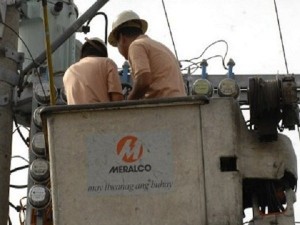Rate hike may stunt growth in Meralco areas

MANILA, Philippines—The surge in electricity prices within the franchise area of Manila Electric Co. (Meralco) is seen to derail the growth of many power-intensive industries, particularly small and medium sized enterprises, and may even result in massive lay-offs if left unaddressed, the Philippine Chamber of Commerce and Industry (PCCI) warned on Thursday.
“This sudden power cost surge is like the ‘Yolanda’ storm surge,” noted Jose S. Alejandro, VP for energy and utilities at the business group.
PCCI officials described the rate hike to have come in “fast and leaving behind significant damage to the industry sector and thousands of SMEs whose operations are power intensive.”
According to Alejandro, this power rate hike could reduce industries’ margins by as much as 40 percent, while cash flows “could be seriously affected as well.”
He also stressed that energy officials underestimated the impact of the Malampaya scheduled maintenance shutdown, which was announced as early as last year—a timeframe that could have given the government more time to prepare.
The monthlong shutdown resulted in a total increase of P4.15 per kilowatt-hour in the generation and transmission charges and taxes being collected by Meralco within its franchise area as the power plants using gas from Malampaya were forced to use the more expensive biodiesel and condensate fuel instead.
Malampaya currently provides natural gas to the 1,200-megawatt Ilijan plant of Korea Electric Power Corp. (Kepco), and 1,000-MW Sta. Rita and 500-MW San Lorenzo plants, all in Batangas. The power generated from these three facilities alone comprises roughly 40 percent of the power generated in Luzon.
“More alarming than this quick incident, where there seems to be a clustering of outages during a brief period of time, is the inability to conclude short-term power supply contracts to meet or anticipate those outages. [The] deeper issue is how could this be averted in the future. Who should be directly responsible in seeing to it that this will not happen again and make safeguards against unforeseen occurrence? Whose head must roll if this happens again?” Alejandro added.
What the Malampaya shutdown also revealed, according to Alejandro, was the lack of clear rules and process policies that can be implemented during such situations.
To help ease the burden of this electricity rate surge, the PCCI is urging the government to tap a portion of the Malampaya royalties to fully or partially subsidize this power cost as a short-term remedy.
The PCCI has also recommend that the Energy Regulatory Commission and the Department of Energy should issue a policy that all power supply contracts shall specify that the power supplier shall be responsible or accountable for providing the interim supply during the scheduled maintenance period and for forced outages.
The PCCI suggested that if the cause of the outage is insurable, then “prudence dictates that the power supplier should have insured itself against such. This would put the cost of interim supply plus the actual cost of the damage on the shoulder of the insurer and not on the consumers.”
Regulators must also admit that they were “absent” insofar as preparations for this outage was concerned, said PCCI vice chair Donald Dee.
